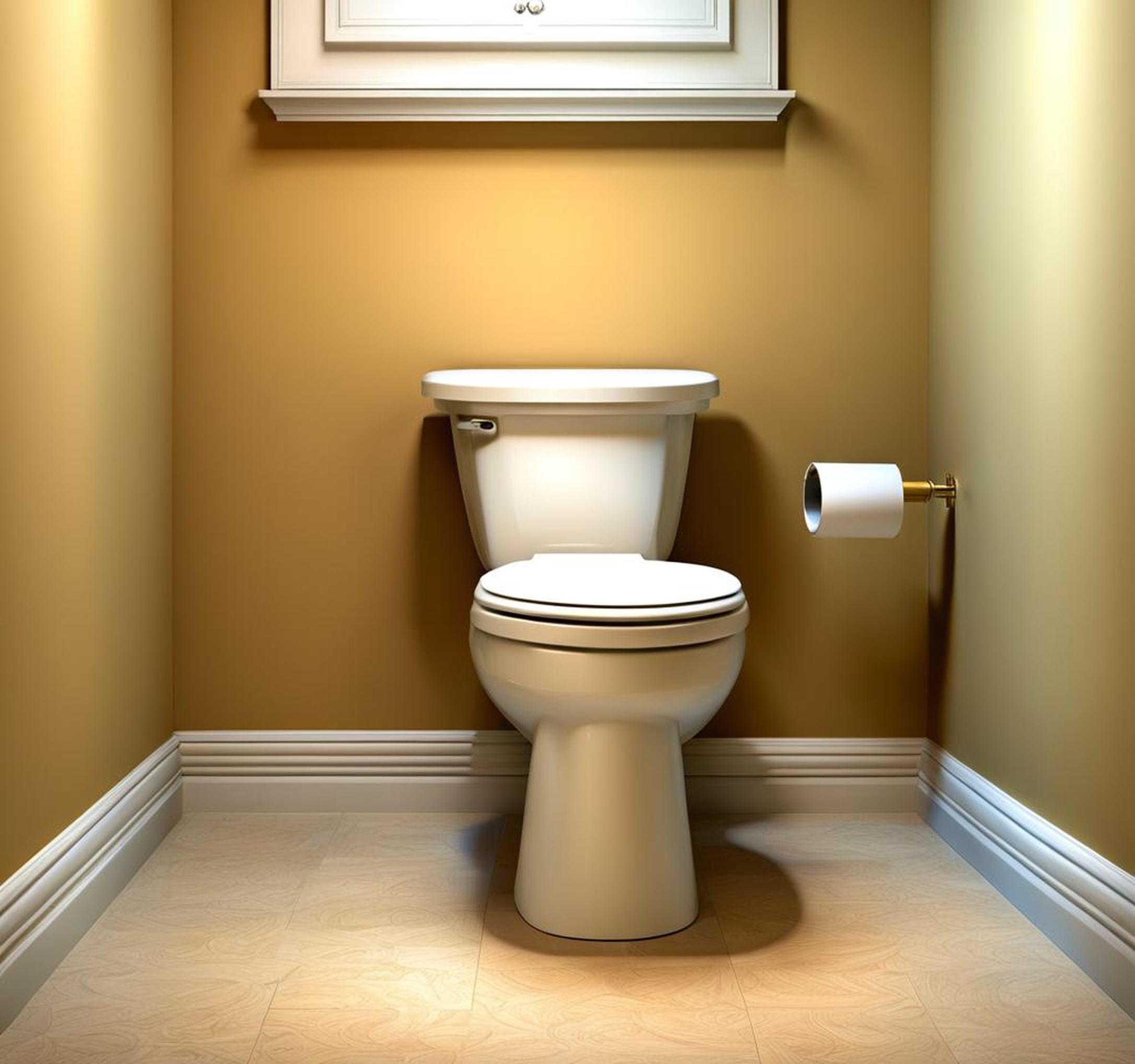Replacing a toilet or renovating a bathroom? The toilet “rough-in” size is a small but mighty measurement that makes all the difference. An accurate rough-in ensures your new toilet slides neatly over the waste pipe in the floor and lines up with the water supply behind the wall.
Miss the mark, and you’ll be contending with leaks, wobbly installations, misaligned tanks, comfort issues, and even cracks in the porcelain. No one wants that kind of hassle.
Lucky for you, determining rough-in size is simple with this straightforward technique. No more guessing games or toilet replacement disasters!
What Exactly is Toilet Rough-In?
Knowing what the rough-in measurement refers to takes a bit of the mystery out of the process.
Toilet rough-in size indicates the horizontal distance between the finished rear wall and the toilet’s drain pipe. Basically, it’s the gap behind the bowl that allows proper alignment with the waste line below.

Typical residential toilet rough-in dimensions are:
- 10 inches
- 12 inches (most common standard size)
- 14 inches
Why Rough-In Accuracy Matters
With toilet replacements, a precise rough-in measurement prevents:
- Leaks from poor pipe connections
- Installation issues like wobbling or movement
- Misalignment between tank and bowl
- Poor functionality and comfort while using the toilet
It also guarantees you select the correctly sized toilet for your bathroom’s unique rough-in distance.
Preparing to Determine Toilet Rough-In Size
If replacing an existing toilet, remove the old unit completely before measuring for rough-in size. This exposes the closet bolts and drain pipe opening you’ll measure from.
Use a philips head screwdriver to detach the tank from the bowl. Then loosen the nuts and bolts securing the base before lifting the old toilet.
For new constructions, locate these reference points on the unfinished floor surface.
Tools You’ll Need
Gather a few supplies first for a smooth measurement process:
- Tape measure
- Phillips screwdriver (for toilet removal)
- Adjustable wrench (to access closet bolts)
Then clear away any baseboards or moldings so they don’t interfere with an accurate reading.
Measuring from Wall to Closet Bolts
The most straightforward approach relies on the closet bolts anchored to the floor on either side of the drain pipe. These indicate exactly where the base of your new toilet will sit.
- Stretch your tape measure horizontally from the bare wall to the center of the left closet bolt.
- Note the measurement and repeat on the right bolt side.
- Compare your readings to confirm both closet bolts are equally distant from the wall.
If measurements match, record this rough-in dimension! If not, use the longer distance for accuracy.
Alternate Method: Measure to Drain Outlet
For new constructions without closet bolts installed yet, determine rough-in size from the drain pipe opening itself.
Place your tape end at the wall, measure straight out to the center of the waste outlet, and mark down this dimension.
Both approaches work. Use whatever fixed reference points match your unique install type.
Tips for Precision Measurements
Avoid common measuring pitfalls with these pro tips:
- Disregard moldings or baseboards when measuring from the wall. Include the actual stud-to-drain distance.
- Check measurements in multiple spots for consistency.
- Note any asymmetrical dimensions requiring an offset toilet.
- For rough-ins above 12 inches, confirm by measuring toilet bolt height on the old unit.
Measuring Non-Standard Toilet Locations
For angled, narrow, or corner toilet installations, adapt the measuring process to determine rough-in size accurately.
Alcoves and Compartments
In narrow recessed areas, estimate the likely drainpipe position behind the limited space for your new toilet.
Then measure from the side walls to this projected center point.
Corner or Offset Installs
For corner toilets, measure diagonally from opposing walls to locate the drain line. Then calculate rough-in size based on this adjusted reference point.
Odd offsets from one wall also require special consideration for toilet alignment.
Choosing a Toilet to Match Rough-In
With accurate dimensions now in hand, select a new toilet sized specifically for your unique rough-in measurement.
Compare rough-in distance to toilet technical specs from manufacturers like American Standard and Kohler.
Also note attributes like elongated vs round bowl or wider vs narrower tank profiles that dictate overall dimensions.
Determining accurate toilet rough-in size doesn’t require special skills, only careful measurement from fixed points. Armed with the techniques above, you can take on plumbing projects worry-free!
